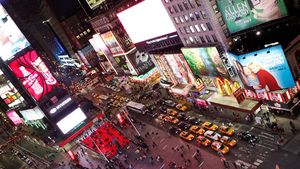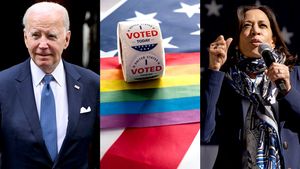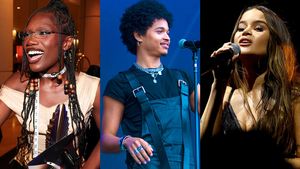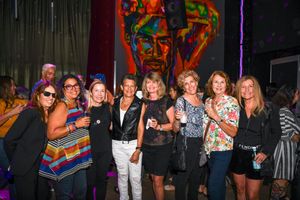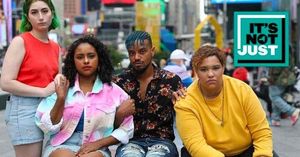LGBTQ+ people often have a distrust of police that can prevent them from reporting hate crimes or incidents against them. The rising rate of hate crimes against the LGBTQ community in Los Angeles has prompted calls for a public health emergency from community members and elected officials alike. Solving the problem requires a hard look at policing and the criminal justice system’s inability to cure the root of the hatred, according to activists and law enforcement.
Detective Orlando Martinez has served the Los Angeles Police Department for nearly 24 years and as a hate crimes coordinator since April 2018. He told The Advocate that without changes to how the justice system handles people who commit hate crimes, the problem will persist.
“The public health emergency is a good idea in theory, but it wouldn't change anything,” Martinez said.
“Because in California, we don’t view criminal sentences as punishment,” he added. “Without rehabilitation programs, nothing is going to change. So throwing resources at a problem without teaching [the suspects] on why being biased is not a good thing, I don’t think there will be any change other than a bunch of money spent.”
In June 2022, the Los Angeles City Council voted to expand access to hate crime reporting following a report from the LAPD’s Deputy Chief Blake Chow and Capri Maddox, general manager of the city’s Civil, Human Rights, and Equity Department that found several glaring errors in the way hate crime data was reported.
One issue was the lack of data sharing between police and other agencies, which is partly addressed in the data from the LACCHR used in this series. But “overall, mistrust of police was identified as the primary barrier to reporting hate,” the report found. “This is particularly the case for immigrant populations and LGBTQ groups.”
Martinez didn’t deny this. “Because of our past conduct in law enforcement, and the government, there’s this built-in distrust of us, which to be frank, we’ve earned,” he said.
He added that the Department aims to encourage more reports by showing victims and their communities that the LAPD will take responses seriously, or, in essence, that “we’re not the LAPD we were 30 years ago, now we give a shit.”
Resources for rehabilitation
The rising rate of hate crimes against the LGBTQ community in Los Angeles has prompted calls for a public health emergency from community members and elected officials alike.
Designating hate crimes in L.A. County as a public health emergency could spur an influx of money to examine the root cause of the issue and provide services for vulnerable communities, L.A. County First District Supervisor Hilda Solis previously told The Advocate.
A state of emergency on LGBTQ+ hate crimes “would require our County to prioritize this, and make sure that we have a coordinated response and that there’ll be some action items,” Solis said.
“I think it is starting to happen,” she said, pointing to the work of the L.A. County Commission on Human Relations (LACCHR), which provided data for these reports and is working to better understand the historical context of hate crimes in LA.
But Detective Martinez noted that “we don’t have a statewide program for bias-motivated offenders.” There is also no penal code for hate incidents.
Martinez added that some suspects might view their prison sentence for a hate crime as more reason to vilify the community they attacked in the first place. “When that person gets out in a year, are they going to see the error of their ways [or] are they going to be more angry at the transgender community because they got caught?” Martinez questioned. “I think our resources should go to programs where we catch offenders before they become offenders.”
The need for dialogue
How do you find hate before it manifests itself?
One way could be outreach programs to facilitate moderated conversations between the local transgender community and their neighbors in an attempt to craft some bridge of understanding.
In Los Angeles, the approach would have to be different by region. In areas that are historically queer-friendly and have more visible LGBTQ+ people including Hollywood, West Hollywood, parts of Long Beach, Silver Lake, or Downtown L.A., the LAPD and LACCHR confirmed there are likely to be more hate crimes.
A neighborhood element would be key, since besides public places (42.3 percent), 30 percent of the 2,833 hate crimes recorded in L.A. County by the LACCHR from 2003-2022 happened at a person’s residence.
“That’s what everyone thinks of as a classic hate crime, in a neighborhood where you’ll have gay bashings,” said Marshall Wong, principal data analyst for the LACCHR. “But what we found is that in some years there are as many cases that occur at people’s residences. And that’s something that very few people think about because most people assume if you are safe nowhere else it’s in the privacy of your own home.”
Wong added: “I’m guessing it’s [perpetrated] more by neighbors, or people in the neighborhood they encounter on a regular basis.” He noted, “We’ve read a lot of reports of trans women who were attacked in front of or nearby where they live, because there were street people who would see them, or gang members on a regular basis, and would always make comments and then act on it.”
So perhaps a community organization would be able to get a gang member and a transgender woman to understand each other through constructive dialogue in a highly supervised and safe setting. But that would take resources that don’t yet exist in a city already straining to address the growing public health burdens of drug abuse, homelessness, and mental illness.
If created, the program could act as behavioral therapy for suspects, Martinez said.
“Before they commit the crime, or if they do, [say] hey, this is somebody from that community, they’re not much different,” he suggested.
Police claim hate crimes are “the highest priority”
According to the LAPD, hate incidents are “the highest priority” classification of crime, requiring investigation and follow-up within at least 10 days of the report date. The LAPD is also obligated to inform victims of their legal rights and facilitate support by connecting them to other resources.
If the criteria for a hate crime are present, the LAPD must inform the Los Angeles District Attorney.
The L.A. County Sheriff’s Department declined to comment on this story.
But this isn’t always how it happens. Bamby Salcedo, a transgender activist and founder of TransLatina Coalition, said the police have often told the community they are at fault for experiencing a crime. “We don’t necessarily believe in the police because the police aren’t the people who are ultimately going to support us the way that we need to be supported,” she said.
How officers are trained is a key component of how hate crimes are policed. The LAPD recently updated its department manual on hate crimes in November 2023, and Martinez claimed it doesn’t allow its just under 9,000 officers to deviate from the policy. If an officer does so with malice, they can be made to attend more training, cited for misconduct, suspended, or fired. And if the deviation is somehow not intentional, the officer will be sent to further training.
“The way we treated people 30 years ago…. That’s what the community expects now, even if they haven’t had a [police] interaction, so we’re paying for the sins of our fathers,” Martinez said. “We’re not perfect, but we’re much better than we were and we’re working towards working with people instead of just with ourselves.”
Martinez is responsible for updating the LAPD’s guidelines and training officers on how to respond to hate crimes. California State Attorney General Rob Bonta’s office’s 2021 guidelines on hate crime prosecution require bias against a protected identity “must be a cause in fact of the offense,” and a “substantial factor” in the crime if there are other motives.
But that’s unclear, Martinez said. “The law says that it must be a substantial factor. But it doesn't tell us what a substantial factor is,” he said. “So when I took over we decided as a department that if there's any factor, we're going to classify it as a hate crime.”
Martinez noted that this could be one reason why hate crime data appears so recently elevated – because the LAPD’s current position is that even if “there’s evidence showing that 1 percent of the reason was because of bias, we’re making it a hate crime.”
The LAPD publishes monthly reports on citywide hate crimes and hate incidents, which are non-criminal acts of prejudice. While crimes in L.A. against LGBTQ+ people and the transgender community were flat year-over-year in March 2024, there was a 50 percent increase in hate incidents against both transgender people and the larger LGBTQ+ community.
When looking back historically, the rate of violence is equal between transgender men and women: Of the 246 hate crimes against trans women recorded from 2003-2022 in L.A. County, 95 percent were violent. There were 25 hate crimes perpetrated against transgender men across L.A. County from 2003-2022, and all of them were violent.
Challenges in prosecuting non-violent hate crimes
Hate crimes without violence are especially difficult to prosecute. These are often perpetrated against nonhuman victims, like an organization or business that is pro-LGBTQ.
L.A. City Attorney Hydee Feldstein Soto prosecutes nonviolent hate crimes at a city level and said that “I am limited to the prosecution of misdemeanors, which are typically property crimes.”
About 31% of the hate crime investigations referred to the City Attorney’s office by the LAPD were based on “alleged bias related to sexual orientation, gender identity or gender expression,” according to Feldstein Soto. The L.A. City Attorney’s office helped 958 crime victims who self-identified as LGBTQ+ from 2019 to 2022. Of those 133 people, or about 13.9 percent, were victims of hate crimes.
Feldstein Soto did say she thought hate crimes were underreported, partly because “it is something that many people shrug off, and it isn’t until there’s been a repeated series of sometimes escalating aggressions that it winds up getting reported, and we’re lucky if it gets reported before it escalates into a felony.”
She noted, “hate speech is not a crime in this country. Therefore a hate crime is a little bit like what Justice Potter once said about pornography – ‘I know it when I see it.’”
If you or someone you know was a victim of a hate crime, you can report it to your state or local police, or anonymously to the FBI. Or reach the U.S. Justice Department resource center for hate crime victims at 1-855-484-2846.
LAPD hate crime hotlines can be reached here.
Editor's note: This story is one in a series for The Advocate investigating the public health impact hate crimes have on LGBTQ+ residents of Los Angeles and the country. It was produced in part by the USC Annenberg Center for Health Journalism’s data fellowship program, which provided training and funding.
























